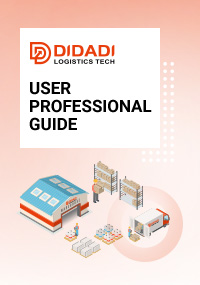DDP Shipping from China: Shortcut or Risk Trap for Global E-Commerce Sellers?

For many new e-commerce sellers sourcing from China, the phrase “DDP shipping” (Delivered Duty Paid) feels like a magic button. One payment, and the goods show up at your warehouse or Amazon FBA center—no customs, no duties to worry about, no surprises.
On social platforms and seller communities, you’ll often see posts from first-time importers praising how smooth their first DDP shipment felt. But if you listen closely to more experienced sellers, you’ll hear warnings: “It works for a small carton, but don’t rely on it when you scale,” or “My shipment got stuck in customs for three weeks because the forwarder misdeclared it.”
So, what is the truth about DDP? Is it the easiest way for global sellers to ship from China, or a ticking time bomb that could damage your business?
Let’s take a deeper look.
DDP, short for Delivered Duty Paid, is one of the Incoterms (International Commercial Terms) established by the International Chamber of Commerce. Under DDP, the seller or freight forwarder takes full responsibility for:
Export clearance in China
International freight
Customs clearance at the destination
Import duties, VAT/GST, and taxes
Delivery to the final address (such as your Amazon FBA warehouse, retail store, or 3PL center)
In practice, for an importer, DDP means:
“I pay one all-inclusive fee, and the goods arrive at my door.”
For example, imagine you’re a new Amazon seller in the U.S. ordering 200 sets of stainless-steel kitchenware from Guangdong. Instead of hiring a customs broker or applying for an Importer of Record number, you simply accept your supplier’s offer: $5,000 DDP to Los Angeles Amazon Warehouse. Thirty days later, the pallets arrive, shrink-wrapped and ready.
It feels smooth. But does it always stay that way?
But here’s where the other side of the story begins. Beneath the surface, DDP often involves shortcuts that can create major risks for importers—especially once they grow beyond small orders.
1. Compliance Traps
To make DDP attractive, some providers undervalue invoices or declare goods under the wrong HS code. For instance:
A shipment of electronics worth $50,000 is declared as “plastic parts” worth $5,000.
A batch of textile products is misdeclared as “samples” to avoid duties.
This may work once or twice, but customs authorities are not naïve. Random inspections, audits, or even tips from competitors can expose the misdeclaration. The consequences?
Seizure of goods at customs.
Fines that exceed the value of the shipment.
Being flagged as a high-risk importer, making all future shipments harder.
2. Unclear Pricing Structures
Since duties and freight are bundled, the importer rarely knows the real breakdown. You might assume the duty rate is 5%, when in fact it’s 12%. That “cheap DDP quote” may be hiding inflated freight costs.
Result: your profit margins shrink without you realizing why.
3. Operational Delays
To minimize declared duties, some DDP shipments are routed through third countries. A pallet might go China → Vietnam → Europe instead of directly. While this lowers the declared duty, it often causes:
Transit times doubling from 25 to 60 days.
Lack of reliable tracking.
Higher risk of inspections at transshipment ports.
4. Loss of Importer Status
With DDP, the Importer of Record is often the freight forwarder, not you. This creates problems:
You can’t properly reclaim VAT/GST.
If you’re selling in the EU, your products may not be legally tied to your company.
Amazon FBA may reject shipments if the Importer of Record is inconsistent.
Example:
A U.S. seller shipped DDP to an Amazon warehouse in Texas. Amazon later required proof that the seller was the legal Importer of Record. Since the freight forwarder used their own tax ID, the seller had no valid import paperwork—and Amazon blocked the inventory.
DDP may work for a $5,000 shipment. But what happens when your orders grow?
For 1–2 cartons, customs may not care.
For 2 pallets, they may start checking.
For 2 containers, audits are almost guaranteed.
The bigger your business gets, the riskier it is to rely on DDP shortcuts. Customs authorities notice patterns, and penalties scale up.
Example:
A Canadian seller started with small trial DDP shipments of fitness equipment. No issues at first. But once they imported two containers, customs demanded full value documentation. Because the forwarder had undervalued the goods, the shipment was seized, and the seller lost both the product and credibility with their suppliers.
To be fair, DDP isn’t useless. It still has its place:
Trial Orders – When you’re testing a new supplier or product, DDP saves hassle.
Non-Sensitive Goods – Low-duty categories like certain toys or small accessories.
One-Time Imports – If you don’t plan to import regularly, the compliance risk is smaller.
But for a long-term business model, DDP should be used carefully and strategically—not as the default solution.
Experienced sellers often switch to other Incoterms for better control:
DAP (Delivered at Place) – Seller handles transport, buyer manages customs.
FOB (Free on Board) – Seller gets goods on the ship/plane, buyer controls freight and import.
CIF (Cost, Insurance & Freight) – Seller pays for freight/insurance, buyer handles import clearance.
These give the importer visibility, legal compliance, and cost breakdowns.
Comparison Example:
| Aspect | DDP | DAP | FOB |
| Who pays duties? | Seller/forwarder | Buyer | Buyer |
| Importer of Record | Forwarder | Buyer | Buyer |
| Cost transparency | Low | Medium | High |
| Compliance control | Low | Medium | High |
Some sellers adopt hybrid strategies:
Use DDP for small test orders.
Switch to FOB/DAP once a product scales.
Split by product: DDP for low-risk goods, FOB for high-value electronics.
Example:
An EU fashion brand tested new seasonal accessories via DDP. Once demand grew, they transitioned bulk shipments to FOB to control customs and VAT compliance. This way, they enjoyed early simplicity but built a compliant long-term model.
At DIDADI Logistics, we’ve seen the full spectrum: sellers who love DDP for its convenience, and sellers who regret relying on it too long. Our philosophy is not to demonize DDP, but to make sure it’s used transparently and responsibly.
Here’s how we help:
Clear Cost Breakdown
We show clients the real freight, duty, and tax components—even when using DDP—so there are no hidden surprises.Compliance Guarantee
We ensure clients remain the legal Importer of Record, protecting their ability to reclaim VAT/GST and pass customs audits.Flexible Solutions
We don’t push one model. Depending on the product, destination, and business stage, we recommend DDP, DAP, or FOB.Hybrid Models
Many clients use DDP for small trial orders, then shift to FOB once volumes grow. We design smooth transition plans to avoid disruptions.
Client Example:
A Canadian Amazon seller initially relied on DDP for small electronics. As orders scaled, they faced customs delays. We transitioned them to a DAP/FOB model, preserving cost efficiency while ensuring compliance. Within three months, their delivery times stabilized, and profit margins improved.
DDP shipping from China is not inherently good or bad—it’s simply a tool.
For small trial runs, it can be a lifesaver.
For scaling businesses, it can become a liability if handled poorly.
The smartest sellers view DDP as an entry point, not a permanent strategy.
At DIDADI Logistics, our role is to help overseas sellers import with confidence. Whether that means using DDP for a pilot shipment, or building a long-term FOB strategy, our focus is the same: clarity, compliance, and control.
Because in cross-border trade, the real competitive advantage isn’t just lower freight rates—it’s the ability to scale sustainably without hidden risks.
Recommended Reading















